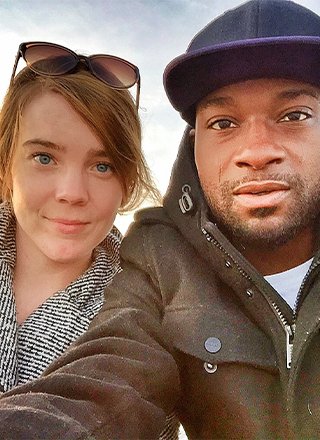By Kenneth M’Bale
When looking at political issues, many times we tend focus on ones that present a big potential shift in our country. It is easy to overlook the more mundane issues, probably because they are so ubiquitous and fundamental to everyday life. This was my mindset coming to Americans United.
I am a Catholic from a family with heritage from the Democratic Republic of the Congo and Haiti. These countries and many others have complicated ties to Catholicism, and to Christianity in general, because these religions arrived as a result of European colonialism and missionaries who sought to oppress traditional beliefs and cultures. The close ties between religion and government in both nations has led to some problems.
The United States, by contrast, is known around the world as a bastion for religious freedom. While we don’t always get it right, we seek the proper balance, with religion being neither too domineering, such as in countries where a certain faith permeates the laws, nor too restrictive, such as in countries where religion is actively discouraged and even persecuted. With this mindset, the way religious freedom functions in the U.S. looked good to me on the surface.
But like any complex facet of society, the true nature of how religion operates in our country requires a deeper plunge. On my first day at AU, I was introduced to case involving the Bladensburg Cross. I was very familiar with this structure. I live in the Maryland county where it’s located. I know that it has been a staple of the area for decades, and it’s something that I saw every day on my way to high school.
To be honest, I had never thought too much about the cross, but I will admit that I did get a slight feeling of disappointment that something that formed a part of my adolescence was being targeted in court. The feeling wasn’t even related to a sadness in a loss of a Christian symbol; it was more so about nostalgia. Interestingly, a week after I started working at AU, a couple of barbers at my barbershop mentioned that the cross might be taken down and expressed similar disappointment in a community staple being targeted.
Traditions and symbols can be tricky things because they don’t mean the same thing to everyone. Catholics may be religious minorities to some extent, but they are a part of the overall Christian majority that is omnipresent in the U.S. That’s when I realized that, as a Christian, I’m viewing the cross from the perspective of the majority. Being African-American, I’m not used to being in the majority group (aside from being a man), so I had never even once considered what it felt to be a non-Christian in America outside of explicit discrimination.
It was easy for me, personally, to overlook Christianity’s presence in the country because I’m part of that majority, but that may not be the same for others. It is hard to switch through radio or TV channels without hearing something related to Christianity, and it’s hard to even traverse different buildings in a given city without seeing a cross. In fact, my home county of Prince George’s has an estimated 800 churches. It is impossible to say that this presence has no influence on non-Christians, and it is impossible to say one could raise their children absent of this influence. It must be unnerving to some non-Christians to live in a community where the government also seems to be endorsing the majority faith by displaying its symbols on public land. That would make me feel like an outsider in my own community.
After coming to AU, I saw the Bladensburg Cross in a new light. I can say I now not only understand AU’s work but the gravity of it and what is at stake. To my fellow Christians, I’d like to say, please do not take every attempt to enforce church-state separation as an attack on Christianity. It is imperative to be critical of each individual situation and weigh the circumstances surrounding it.
Yes, the cross has been a part of the community and the community’s collective memories, but we would still have those memories even if the cross had been removed. They can never be taken away. But please consider that it is a bit daunting or unsettling for non-Christians to see a 40-foot-tall cross in an area that’s not a church and is indeed public land. By all means, follow your faith – but have the courtesy to consider the feelings of others who follow a different faith and don’t see the omnipresence of Christianity in our country the same way.
Kenneth M’Bale, a rising senior at University of Maryland-Baltimore County majoring in media communications and political science, is an intern in Americans United’s Communications Department.


